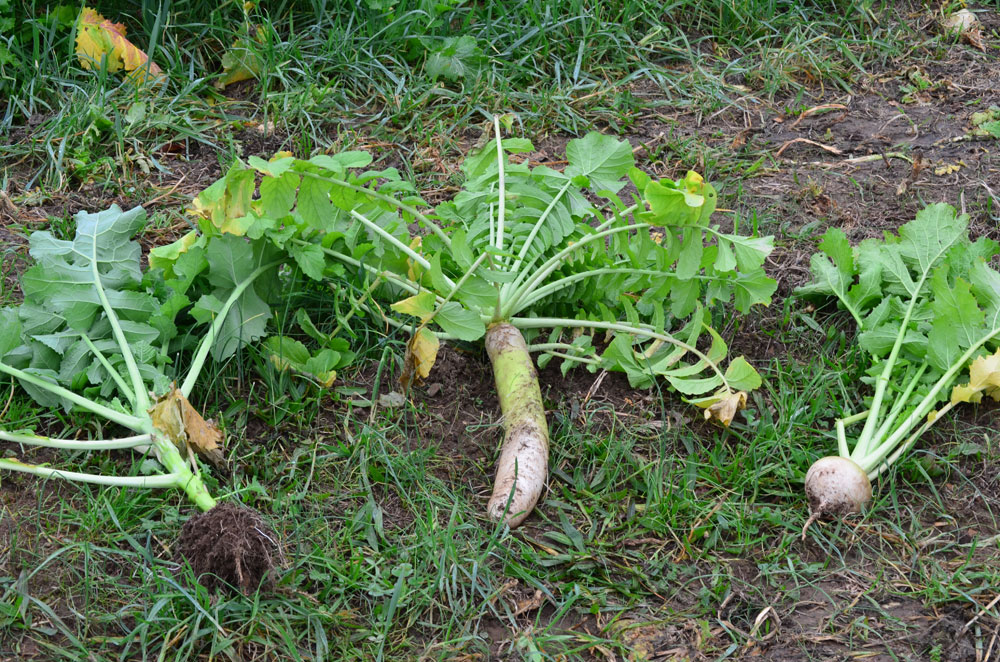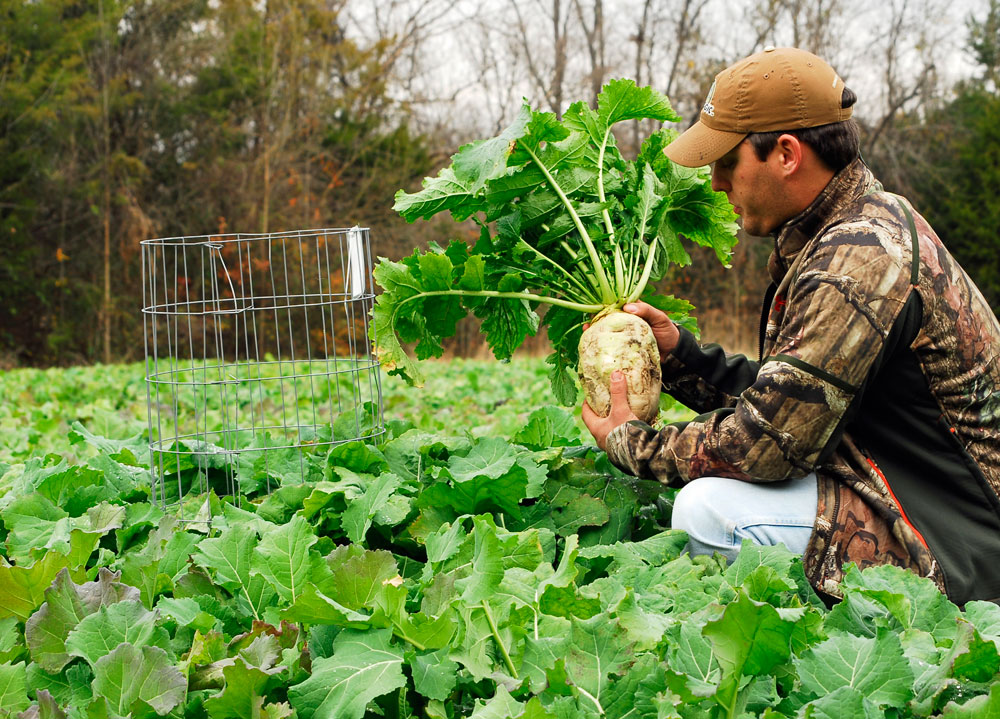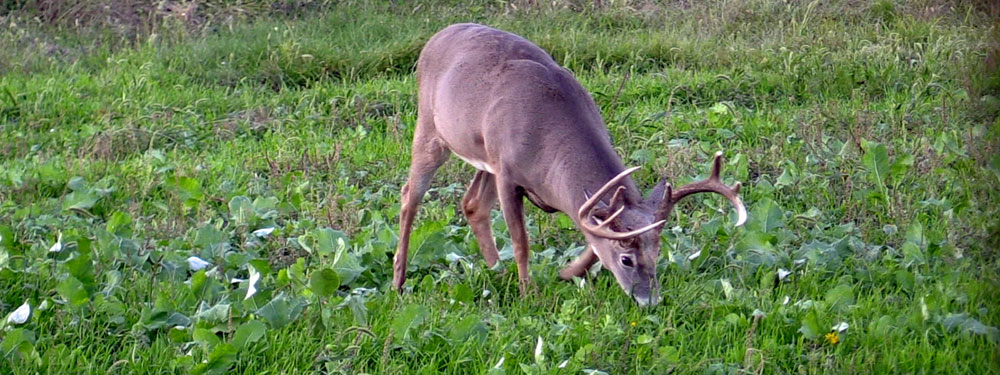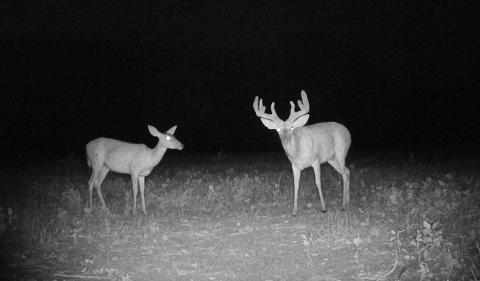The Incredible, Edible Brassica
A look at which brassicas are best at various times of the season and under different conditions.
Todd Amenrud

From the time Toxey Haas and BioLogic first guided “whitetail deer management” into the age of planting brassicas, we have been researching, learning more about them and understanding better how to utilize different brassicas to help us accomplish a wide variety of management goals. If you have enough ground to devote to your food plot program, most managers would agree that a well-diversified food program with an assortment of plants that will offer your herd what they need regardless of the time of the season or current conditions is the way to go. Some of the plants you choose would likely be perennials, but for the best in attraction during the hunting season it’s hard to beat a food plot full of luscious late summer to fall planted annuals.
When it comes to annuals, many readers know that brassicas are, in my opinion, the best deer food God ever created. They are my favorite plantings for numerous reasons; they are the most attractive, best producing (yield), most nutritious, easiest to plant and one of the hardiest growing food plot choices we have. Combine that with the fact that they’re also great for the soil. What’s not to like? Sure, I live in the North, but those in the South shouldn’t be so quick to snuff them. They work the same throughout the South, but closely examining the palatability timeframe and conditions under which each variety of brassica performs best is more important in the South than in northern climes.
At first (about 20 years ago) we at BioLogic ran into a couple instances of having to battle the “whitetails’ learning curve.” When you introduce a plant deer have never seen before, one that if they tried it before the sugars had developed may have been bitter, it could take them a season or two to become accustomed to it. However, that was rare and I haven’t heard of it happening in years.
Annuals, in general, are typically easy to plant and since these are late summer to fall plantings, (depending on your location north to south) the summer weed cycle should be over for the most part. While always called a fall planting, you’ll see that I call these late summer to fall plantings. Because if you wait to plant some of these until it’s literally fall (September 22 or 23, depending on the year and your location), in some areas you may end up with a failure, or at the very least you’re not getting the most out of the plants, especially brassicas.
Many still plant their brassicas when they have always traditionally planted their cereal grains. In the northern region and into Canada, brassicas should be planted during July through early August and cereals planted from late July (in the far north around the Canadian border) through August or even September further south (Iowa, Illinois, Nebraska, etc). Obviously that should be adjusted a bit later the further south you go, all the way into October for the Deep South.
Years ago, when Toxey Haas and Grant Woods first introduced brassicas to the food plot market, rape was the primary type of brassica used. As most of you probably know, brassicas require cold temperatures to convert the plants’ high levels of starch into sugar and transform it into its most attractive, palatable stage. Initially, for some in the South the brassicas weren’t reaching their most appealing state until after the hunting season was over. Since then, BioLogic has introduced other types of brassicas that develop their sugars much earlier, and even in the South are likely the best attraction and nutrition you can plant – bar none.
A common progression during the hunting season would see your herd switch from legumes (both perennials like clover or alfalfa, or annuals like soybeans or cowpeas) to cereal grains (like oats, wheat or triticale) to brassicas (like radishes, turnips, rape and kale). While there are many other things we can offer our herd, with these three types of plantings your herd should have a palatable food choice throughout most of the hunting season or until each type of food runs out.
Different crops will dramatically extend the palatability timeframe of your plot. To take that “variety approach” a step further, within every type of crop, by planting a different assortment of each it will also extend the amount of time your plot will remain attractive, especially when it comes to brassicas.
From my experience, they will attack radishes first. Whitetails will first lay siege to the green tops, then finish by devouring every bit of the long root tubers. These aren’t your “auntie’s dinner radishes,” these are large tubers that resemble a “huge, white carrot” rather than our more familiar small, round, red and white radishes. My favorite blend is BioLogic’s Deer Radish, it’s not just my preferred brassica planting, it’s my favorite planting, period. From my experience they will begin eating these radishes as early as late August in the north and around early October further south (northern Alabama) until they’re gone. So if you plant enough, they can last throughout the season.
Next, your whitetails will typically set their sights on various turnips and beets. While sugar beets are actually in a different plant family and are not a brassica, they are very similar. Just like turnips, they hold a high concentration of sucrose, however it is contained mostly in the root bulb (They still eat the tops.) as opposed to brassicas that have sugars contained throughout the plant, and the sugar presence is caused more by photosynthesis than cold temperatures. I usually see them hit these plants after the radishes, and I use them for attraction during the months of November and December and on until they’re gone. My favorite blend is Winter Bulbs & Sugar Beets, and just like the radishes, they will consume the entire plant. First they’ll eat the greens and then the root bulbs. The radishes are easier for them to pull out of the ground to consume, so with turnips and beets you’ll often see partially eaten bulbs or they’ll scoop out the top and inside of the turnip or beet so it looks like a “beet bowl” left in the soil.

Lastly, they tend to hit rape, canola and kale after the radishes, turnips and beets. These last three brassica types do not produce large root bulbs or tubers like radishes, beets or turnips, but they produce an amazing yield of sweet, green forage. I tend to use these last three brassica types more as winter nutrition than hunting time attraction, but especially when it comes to the blend Maximum, you may want to also plant some for hunting attraction. Maximum produces a yield of more succulent, nutritious forage than any other planting I’ve ever seen. While they certainly may hit these brassicas as soon as cold temperatures convert the plants’ huge green tops to become sweet, if you have radishes and turnips also planted, they’ll typically consume rape after the other two brassica types.
Kale is especially cold hardy. Kale’s large leaves will stay green and attractive long into the winter even if covered by several feet of snow. I tend to utilize kale only as winter nutrition.
Remember that the timeframe I’m suggesting for these to be their most attractive is just an estimate. It can vary from year to year and region to region. As an example, in the “big woods” where there isn’t a lot of agriculture or other crops to back up your food plots, they may eat any of these as fast as they come out of the ground. Or, if we have an unseasonably warm fall it may take the brassicas longer to develop their sugars, pushing back the entire attraction calendar.
I didn’t want to be too northern biased in this piece, so I asked the “frenetic food plot scientist of Alabama,” Austin Delano, who also heads-up BioLogic’s Research and Development, “How do you notice whitetails reacting to each of these plant varieties throughout the south?”
Austin said, “I definitely agree with the order. I think deer density, surrounding food sources (or lack of), a deer herd’s familiarity with the plot, and weather conditions during that year are all variables that can determine how fast and when a brassica plot is consumed.”
He also echoed how important it is to have a “blend” with varying maturity rates and palatability timeframes.
Delano continued, “As far as a north/south comparison, I do think deer consume brassicas earlier in the fall the further north you go. Not just because the onset of cold weather changes the plants, but it also changes a deer’s metabolism and increases their need for heavier carbohydrate foods like brassicas. I also believe that brassica consumption (regardless of type) increases over time and gets earlier in the year when they are planted in the same area every year. In other words, deer that have several generations of exposure to brassicas typically use them earlier and more often.”
Basically he’s also talking about a learning curve, but now it’s working in the opposite direction, in the deer’s favor. I guess it’s in our favor too.
The other great thing about brassicas is not only are they the best attraction I have ever seen, they are without a doubt the absolute best nutrition you can provide for your herd. With an average crude protein content of 32% to 38% (depending on the cultivar and stage of growth) and a TDN (Total Digestible Nutrients) of over 80%, that would suit me fine, but add to it they yield more than any other planting and they are great for the soil (radishes especially). Check mate! Brassicas win! As I said, best deer food God has ever created.

More often than not, I plant my cereals and brassicas separately, for several reasons. However, if a manager wants a fast, simple, “one and done” plot, a blend of cereals and brassicas (and sometimes other plants) together may be your ticket. Blends like Full Draw, Last Bite, Green Patch, or Winter Grass Plus provide brassicas mixed with cereal grains. An annual or bi-annual clover is sometimes added to provide extra nutrition or a flush of nutritious forage reemerging after dormancy the following spring.
Delano also told me, in his home state of Alabama, he likes to mix Trophy Oats with Deer Radish. He said it’s an easy to do, “one and then you’re done” hunting plot. Provided you plant enough, this can keep them coming back for more throughout the entire hunting season. I don’t know anyone who tests more food plot options than Austin, or many who know as much about deer management, so when he says so, I take it as fact. There are several reasons why a manager may choose to plant each (oats and radishes) separately, but as a simple plan for an uncomplicated, yet diverse hunting plot I would consider this.
Think about all the options we have to plant for whitetails, we’ve only partially covered brassicas (and one beet type). We didn’t even talk about spring planted crops that can also be very attractive to whitetails like corn, buckwheat or clover. Or other late summer/fall planted annuals like winter peas, which are amazingly appealing to whitetails.
One important thing to mention is that brassicas can also be planted with perennials. In the North they traditionally plant perennials during the spring, but in the South this can be a great way to kill two birds with one planting. If you’re in the transitional region or north and habitually have problems with weeds in your perennials, planting a brassica/perennial blend during the late summer can produce a great start to a perennial plot. Blends like Perfect Plot or Premium Perennial are my go-to products for this. You just need to make certain when planted you give the perennials 50 to 60 days of growth so they can establish their root systems, which will ensure their survival and reemergence after winter dormancy.
With the perennial/brassica option since obviously the brassicas are annuals and won’t come back, I would suggest that you over-seed with a pure perennial like Clover Plus or Non-Typical the following spring to fill in any spaces vacated by the annual brassicas growing there the previous year.
In a very roundabout way, I guess I’ve tried to convey that “variety in a food plot program is important” and “brassicas are my favorite food plot crop.” All of the plants mentioned are great choices for a food plot, but they’re eaten at different times or under different conditions, which is exactly why it is wise to plant a variety if you have enough acreage to devote.






























